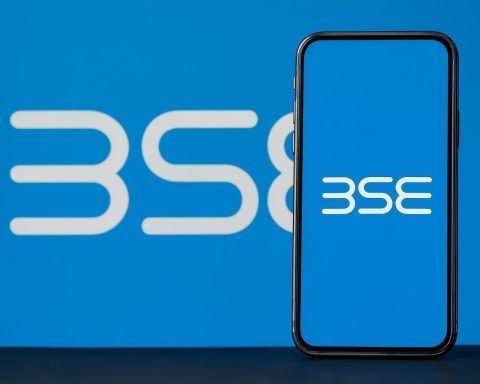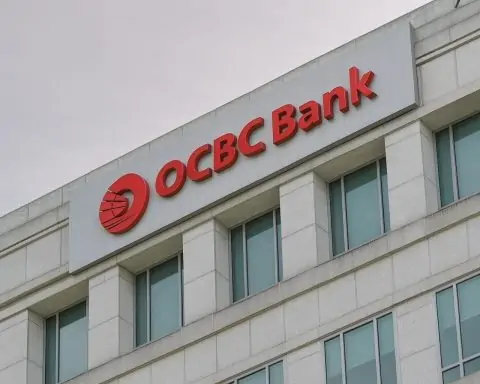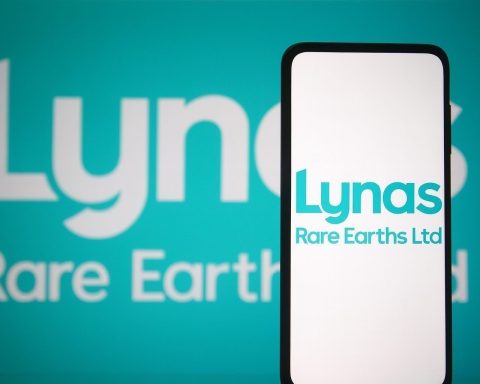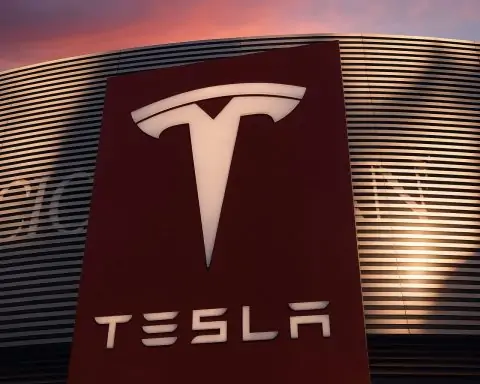- China’s Export Clampdown: Beijing announced on Oct. 9 new controls on dozens of rare-earth materials and technologies. From Nov. 8 the export of 12 of 17 rare-earth elements (including heavy lanthanides like holmium and terbium) will be banned or strictly licensed [1]. Even products containing as little as 0.1% Chinese rare-earth components (from magnets to batteries and electronics) now require Chinese government approval [2]. These sweeping rules (covering military and high-tech uses) mark China’s broadest move yet to weaponize its dominant rare-earth supply. (China already tightened export licenses in September – exports in Sept. fell ~31% year-on-year [3] – so the Nov. 8 curbs amplify an existing squeeze.)
- U.S. Counterpunch: President Trump immediately vowed retaliation. He announced 100% tariffs on all Chinese imports effective Nov. 1 [4] [5], and even threatened to cancel his upcoming meeting with Xi Jinping. On Oct. 12 he tweeted “Don’t worry about China, it will all be fine” as he publicly softened his tone [6] [7]. Internally the administration says it has prepared countermeasures (even considering export-licenses on strategic tech to China) and expects to raise the issue at this week’s G7 and IMF meetings [8]. For now, both sides say a Trump–Xi summit (scheduled for late October in South Korea) remains on track [9] [10], but the threat of a full-scale trade war looms.
- Washington’s Warning: U.S. Treasury Secretary Scott Bessent led the charge in public, blasting China’s move as economic aggression. In media appearances he accused Beijing of trying “to pull everybody else down with them” by choking tech supplies [11]. He warned starkly that “if they aim to slow down the global economy, they will be hurt the most” [12]. On Fox Business he said China had “pointed a bazooka at the supply chains and the industrial base of the entire free world” [13]. Bessent also noted China is in a recessionary spiral, “exporting its way out of it” via these policies [14] [15]. He vowed U.S. resolve: “We will not let these export restrictions go on,” and said the U.S. is rallying allies to its side [16] [17].
- Market Reaction – Winners: Rare-earth miners and allied firms surged. On Oct. 14 the U.S. rare-earth index jumped, with Critical Metals Corp. up ~29% and MP Materials up ~3.8% [18]. (MP Materials had already doubled this year and USA Rare Earth Inc. had tripled, as supply fears fueled a rally [19].) In China, rare-earth companies hit new highs (e.g. Northeastern China Northern Rare Earth +10% on Oct. 10) [20]. Benchmark Mineral Intelligence summed it up: we’re entering “structural bifurcation” – China will localize its supply chain while the U.S. and allies accelerate their own [21]. In fact, Global critical minerals are now a strategic race: for instance, TS2.tech notes the U.S. even eyed an 8% stake (~$50m) in Greenland’s huge Tanbreez rare-earth mine – on news of the talks Critical Metals spiked ~60% [22]. (Analysts call Tanbreez “a game-changer for the rare earths supply chain in the West,” due to its vast heavy-REE deposits [23].)
- Market Reaction – Losers: By contrast, tech and broad stock indices wobbled. U.S. markets dipped Oct. 14 – the Nasdaq fell ~0.8% and the S&P 500 ~0.2% [24] – as traders feared fallout. Big tech shares slid: Nvidia and Intel each lost ~4–5% [25] on U.S.-China trade jitters. Safe assets rallied – gold and silver hit all-time highs (gold ~$4,186/oz) [26] as investors sought hedges. In Asia, China’s Shanghai Composite closed modestly lower, Hong Kong’s Hang Seng fell ~1.5% on Tuesday [27]. (On Oct. 13 Shanghai had retreated from early losses to end only ~0.2% below its recent peaks [28].) Notably, China’s dedicated rare-earth stock index bucked the selloff, jumping 6% to record highs as its sector came into focus [29]. Commodity prices have also responded – rare-earth spot prices have spiked and some manufacturers are already scrambling for alternatives.
- Shipping & Port Fee Retaliation: Beyond minerals, both sides imposed maritime countermeasures. China blacklisted five U.S. subsidiaries of South Korea’s Hanwha Ocean shipbuilder (a partner in U.S. shipyards) [30]. Beijing said it’s retaliating against a U.S. investigation into China’s shipbuilding dominance, and vowed more actions. The U.S. and China also began charging new port fees on each other’s vessels this week [31] [32]. These tit-for-tat moves added to market unease and drew warnings (AP quotes a consultant: “China just weaponized shipbuilding,” noting Beijing will hit third-country firms aiding U.S. shipbuilding [33]). The co-CEO of NY Fed’s LendUp warned President Trump that China “weaponized” its dominance, and Senators on the Banking Committee similarly called for countermeasures.
- Allies Mobilizing: U.S. officials say they are lining up support. Bessent told Fox Business that the U.S. has been “in touch” with Europe, India and Asia Pacific democracies for “substantial” coordinated backing [34] [35]. European Commission vice-president Valdis Dombrovskis and Danish FM Lars Rasmussen publicly condemned China’s actions, calling for an EU response [36]. At the G7 meeting this week in Washington, trade and security chiefs will surely raise the issue. India (a rising rare-earth producer) reportedly is already bolstering efforts: auto and defence firms are testing ferrite-based magnets (a less-efficient China-free alternative) and planning local recycling, and New Delhi is talking with allies about joint stockpiles [37] [38]. Taiwan’s economy minister Kung Ming-hsin urged domestic recycling of rare metals to secure supply for local EV and drone makers [39].
- Expert Analysis & Outlook: Commentators urge calm but vigilance. Many see these moves as temporary bargaining. Morgan Stanley analysts call China’s move a “tactical escalation” to gain leverage before the Trump–Xi summit, rather than an irreversible break [40]. DBS Bank’s CIO noted that market concerns should be “rationally” resolved, as “large-scale conflict is too high” a cost for either side [41] [42]. Still, forecasters warn of volatility ahead. An Oxford Economics analysis cited by Investopedia found a full-blown trade war could inflict an economic shock “on par with the onset of COVID-19” on the U.S. economy [43]. China’s own concessions remain unclear: Beijing claims “vast room for cooperation” [44], but experts warn any softening may be hard after this aggressive stance. In the near term, expect price spikes and supply scrambling for magnets and battery metals, while Western governments pour funds into domestic mining and recycling. Benchmark Mineral Intelligence sums it up: global rare-earth supply chains will likely bifurcate, with China doubling down on internalizing production and the U.S. and allies racing to build independent sources [45].
Sources: Recent news reports and analyses (Washington Post, Reuters, AP, CNBC/FT reports, Fortune) plus industry data and tech media [46] [47] [48] [49] [50] [51] [52], among others. Expert quotes and stock data are from these sources.
References
1. www.reuters.com, 2. www.investopedia.com, 3. www.reuters.com, 4. www.business-standard.com, 5. www.mexc.com, 6. www.investopedia.com, 7. www.business-standard.com, 8. www.business-standard.com, 9. www.business-standard.com, 10. www.investopedia.com, 11. www.mexc.com, 12. www.mexc.com, 13. economictimes.indiatimes.com, 14. www.mexc.com, 15. www.business-standard.com, 16. economictimes.indiatimes.com, 17. economictimes.indiatimes.com, 18. www.investopedia.com, 19. www.investopedia.com, 20. www.reuters.com, 21. www.reuters.com, 22. ts2.tech, 23. ts2.tech, 24. www.investopedia.com, 25. www.investopedia.com, 26. www.investopedia.com, 27. www.reuters.com, 28. www.reuters.com, 29. www.reuters.com, 30. apnews.com, 31. apnews.com, 32. www.investopedia.com, 33. apnews.com, 34. economictimes.indiatimes.com, 35. economictimes.indiatimes.com, 36. economictimes.indiatimes.com, 37. economictimes.indiatimes.com, 38. economictimes.indiatimes.com, 39. economictimes.indiatimes.com, 40. www.reuters.com, 41. www.reuters.com, 42. www.reuters.com, 43. www.investopedia.com, 44. www.washingtonpost.com, 45. www.reuters.com, 46. www.washingtonpost.com, 47. www.business-standard.com, 48. www.mexc.com, 49. economictimes.indiatimes.com, 50. www.reuters.com, 51. www.investopedia.com, 52. www.reuters.com










